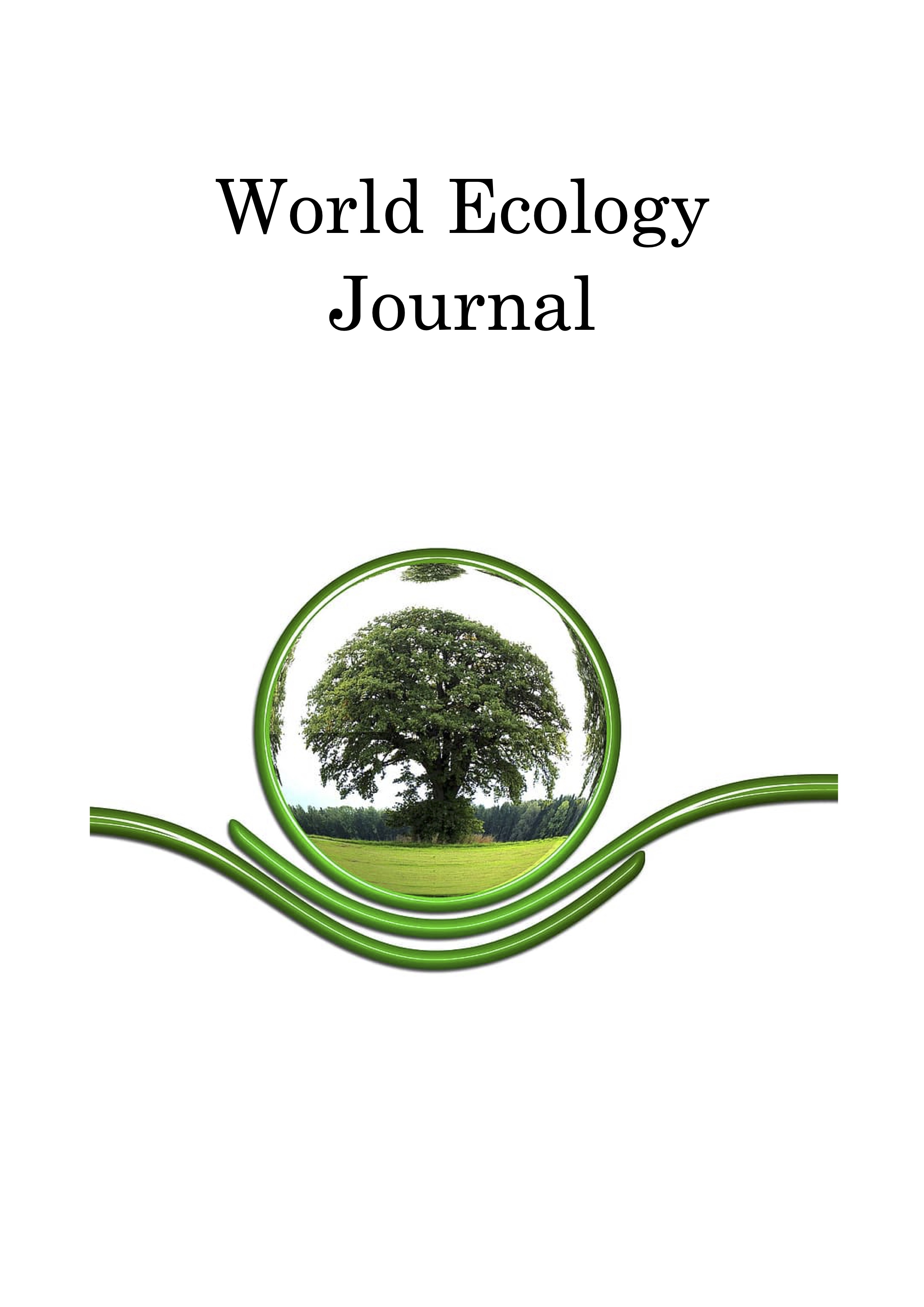Usage practicability of acer l. Species in landscaping in the central part of Rostov region
DOI:
https://doi.org/10.25726/worldjournals.pro/WEJ.2019.2.5Keywords:
Acer L. (maple), landscaping, public use items, park, square, avenue, street plantings, durability, dry steppe, luminosity, cluster analysis.Abstract
Short-lived fast-growing and non-forming dense shadow woody species, more than 60% , dominate in the forestlands and the total mass of landscaping of urbanized territories of Rostov region. Durable species account for less than 18%. At the same time they are these species that create more comfortable conditions for recreation in the steppe zone due to the dense crown (Teodoronski, 2010). The reasons for such low participation of durable plants in urban planting of greenery are the lack of study of their bioecological potential and adaptation capabilities in an arid region, and the difficulty of planting material culture.
The crucial task is bioecological justification of the possibility of expanding biodiversity in landscaping of public objects (parks, squares, avenues, street plantations) and clarification of recommendations to implement landscaping involving species of the Acer L. genus.
The aim of the research is a comprehensive assessment of the state of woody species of the Acer L. genus and the development of methods to increase the stability and ornamental durability of maple plantations at the public landscaping sites of Rostov agglomeration.
The objects of research were uneven aged plantations with the share of Bosnian maple (Acer platanoides L.) and its spherical form (Acer platanoides "Globosum"), sycamore maple (Acer pseudoplatanus L.) and silver maple (Acer saccharum) located on the items of landscaping (parks, squares, avenues, streets) of Rostov region.
The research revealed that the area of green plantations of Rostov region tends to decrease while the area of urban territory and population has increased by 7.8 and 3.3 times respectively since 1980.
The area of landscaping public use plantations with participation of representatives of the Acer L. genus in Rostov region is 11.42 hectares. Among them there are 62.46% at the age of 51 to 80 years old. The participation share of Acer platanoides L. varies between 8.1-10.2, A. pseudoplcitcinus L. 3.0-4.4, specificallyt A. saccharinum L. 0.4-1.7, A. platanoides "Globosum" 1.1-5.4%.
References
2. Kulik K. N. Increasing biodiversity in recreational and landscaping plantations of the arid zone of Russia: scientific.- method. decree. - M., 2008. - 17 p.
3. Kulygin, A. A. seed Preparation of tree and shrub species for sowing: studies. allowance for students. spets. "Lesn. and Park khoz-vo" / A. A. Kulygin; Novocart. state of melior. Akad.,- Novocherkassk; 1999. - 59 p.
4. Merinov Yu. N. The delimitation of the Rostov agglomeration / Y. N. Merinov, Y. Y. Merinova]. - 2014. - № 6.
5. Pokhilko L. O. Ecological principles of formation of the range of woody plants in gardening of Rostov-on-don : author. dis. ... kand. Biol. Sciences / L. O. Pokhilko. - Rostov n / A, 2009. -26 p.
6. Recommendations for the use of species of the genus "Acer" in landscape gardening " [Text] / I. S. Kolganova; S. S. Taran; Novocherk. ing. chalk. Institute of the Donskoy state agricultural UNIVERSITY. Novocherkassk, 2017. - 24 p.
7. Romanov E. M. forest cultures. Production and application of non-traditional organic fertilizers in forest nurseries : studies. the allowance / E. M. Romanov, T. V. Nureyev, D. I. Mukhortov. - Yoshkar-Ola: Margtu publishing House, 2001. -156 p.
8. Semenyutina A. V. Efficiency of using the cluster method in the analysis of the decorative advantages of planting plantations / A. V. Semenyutina, I. U. Podkovyrov, S. Taran // Global scientific potential. -2014. - № 7 (37). - P. 21-27.
9. Range of trees and shrubs for reclamation of agro-and urban landscapes of the dry zone.-method. recommendations / V. Semenyutina. Moscow –Volgograd : VENIALI, 2002. -60 PP.
10. Semenyutina A.V., Podkovyrov I. J. Methodology for optimization of plantings in the green space // Science. Idea: the electronic periodic magazine. 2014. No. 1. URL: https://cyberleninka.ru/article/n/metodologiya-optimizatsii-nasazhdeniy-na-obektah-ozeleneniya (date accessed: 21.12.2018).
11. Taran S.S. Methodological aspects of assessing the results of the introduction of woody plants for landscaping / S.S. Taran, I.S. Kolganova // Fundamental research. - 2013. - No. 11-9. - S. 1892-1896.
12. Teodoronski V. S. Planting of settlements. Urban planning basics: studies. allowance for students. institutions higher. professional education / V. S. Todoronski, G. P. Zherebtsov. - Moscow: Academy, 2010. - 256 p.
13. Hilaire R.S., Graves W.R. Stability of provenance differences during development of hard maple seedlings irrigated at two frequencies // HortScience. – 2001. – V. 36. – № 4. – P. 654-657.
14. Vertrees J. Understocks for rare Acer species // Comb. Proc. Intern. Plant Propogators’Soc. –1992. –V. 41.–P. 272-274.
15. Valentine F.A., Wastfall R.D. Urban tree progeny test of maples // J. Arboriculture. – 1979. – V.5. – P. 166-167.




